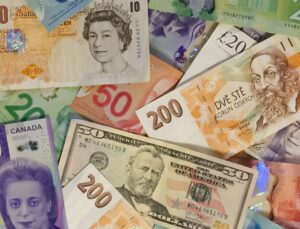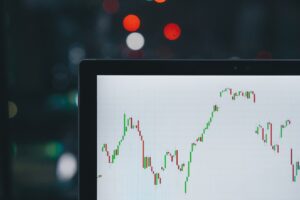Time Frame Analysis in Forex Trading: How to Use Multiple Time Frames for Better Results
Time frame analysis is a powerful tool in forex trading that can help traders make better-informed decisions and improve their trading results. By using multiple time frames, traders can gain a deeper understanding of market trends and potential price movements, allowing them to enter and exit trades with more confidence.
In forex trading, time frames refer to the duration of a single candlestick or bar on a price chart. Different time frames can range from seconds to weeks or even months, each providing a unique perspective on the market. Traders often use multiple time frames to analyze the same currency pair, enabling them to identify short-term trends within a larger market context.
The primary benefit of using multiple time frames is the ability to filter out noise and identify more reliable trading opportunities. By examining the market from different time perspectives, traders can spot trends that may not be apparent on a single time frame. For example, a short-term downtrend on a 15-minute chart may be part of a larger uptrend on a daily chart. By recognizing this, traders can avoid taking trades against the dominant trend and instead focus on aligning their strategies with the broader market direction.
To effectively use multiple time frames in forex trading, traders should follow a step-by-step process:
1. Set the primary time frame: The primary time frame is the chart that provides the main context for trading decisions. It is typically a higher time frame, such as a daily or weekly chart, where traders can identify long-term trends and major support and resistance levels. This time frame helps traders determine the overall market bias and potential trading opportunities.
2. Identify the intermediate time frame: The intermediate time frame is the next level down from the primary time frame. It could be a 4-hour or 1-hour chart, depending on the trader’s preference. This time frame allows traders to zoom in on shorter-term trends and potential entry and exit points within the larger market context. It also helps identify key levels of support and resistance that may impact the trading decisions.
3. Use the short-term time frame for precision: The short-term time frame, such as a 15-minute or 5-minute chart, provides traders with detailed information on market volatility and potential short-term reversals. This time frame is useful for fine-tuning entry and exit points, managing risk, and avoiding false signals. However, traders should be cautious not to get too caught up in short-term fluctuations and always refer back to the higher time frames for confirmation.
4. Align the time frames: Once the primary, intermediate, and short-term time frames are set, traders should align them to ensure consistency and avoid conflicting signals. For example, if the primary time frame shows an uptrend, the intermediate time frame should also reflect the same. If there is a discrepancy, it may indicate a potential reversal or consolidation phase, requiring further analysis.
By following this time frame analysis process, traders can gain a comprehensive view of the market and make more informed trading decisions. However, it’s important to remember that time frame analysis is not a guaranteed strategy for success. It is just one tool among many that traders can use to improve their trading performance.
To further enhance time frame analysis, traders can also incorporate other technical indicators and tools. For example, trend lines, moving averages, and Fibonacci retracement levels can provide additional confirmation of trends and potential reversals across multiple time frames.
In conclusion, time frame analysis is a valuable technique in forex trading that allows traders to gain a deeper understanding of market trends and potential price movements. By using multiple time frames, traders can filter out noise and identify more reliable trading opportunities. However, it is essential to align the time frames and use other technical indicators for confirmation. With practice and experience, traders can leverage time frame analysis to improve their trading results and achieve greater success in the forex market.






